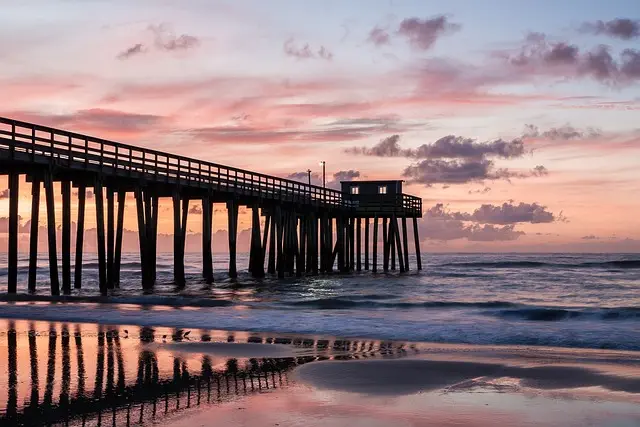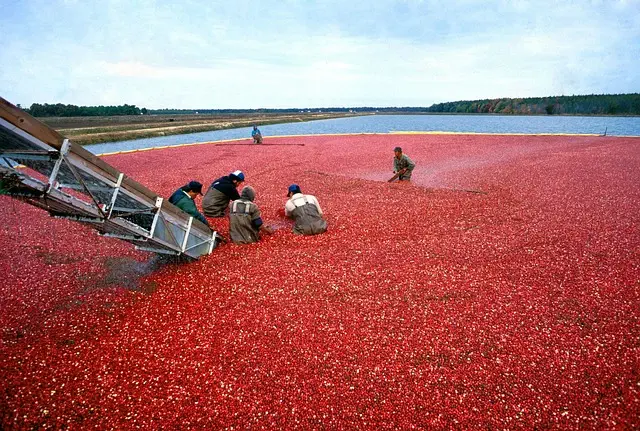The Paterson Great Falls National Historical Park in New Jersey is a significant site that combines American history with natural beauty, spanning over 789 acres and featuring the iconic Great Falls on the Passaic River. This park offers a rich blend of historical exploration, including sites like the Alexander Hamilton House and the Washington Associated Site, alongside the industrial legacy depicted by Lambert Castle, all set against New Jersey's scenic landscapes. It serves as an educational hub for understanding the economic impact of waterways, particularly during the late 18th century when the falls powered Paterson, America's first planned city. The park is also a hub for outdoor activities, with trails ideal for hiking, birdwatching, and picnicking, providing a window into New Jersey's ecosystems and a narrative of its industrial past and commitment to sustainability. It's a vital destination for those interested in New Jersey's history, culture, and natural splendor.
Embark on a journey through time and terrain at the Paterson Great Falls National Historical Park in New Jersey, a site where history and nature converge. This article takes readers on an exploration of the area’s rich tapestry of history, showcasing its pivotal role in American industrial growth and its stunning natural landscapes. Delve into the significance of the park’s waterways, which have shaped both the region’s economy and environment. Additionally, discover the myriad outdoor activities and cultural heritage sites that invite visitors to engage with the park’s stories firsthand. Join us as we highlight the unique offerings of this New Jersey gem, a testament to the nation’s past and an invitation to its natural wonders.
- Exploring the Rich History and Natural Wonders of Paterson Great Falls National Historical Park, New Jersey
- The Significance of the Waterways: A Hydrological Journey Through New Jersey's Paterson Great Falls
- Trails and Tales: Experiencing the Outdoor Activities and Cultural Heritage Sites in Paterson Great Falls National Historical Park, NJ
Exploring the Rich History and Natural Wonders of Paterson Great Falls National Historical Park, New Jersey

Situated in the heart of New Jersey, the Paterson Great Falls National Historical Park is a testament to the state’s significant role in American history and its breathtaking natural landscapes. This expansive park encompasses over 789 acres, offering visitors a chance to immerse themselves in the area’s storied past. The focal point, the Great Falls of the Passaic River, is an impressive, cascading waterfall that has shaped both the geography and the human history of the region. Visitors can explore the falls through various vantage points and walking paths that meander alongside the river, providing panoramic views of the powerful natural wonder.
The park’s historical significance extends beyond the falls themselves, with sites like the Alexander Hamilton House and the Washington Associated Site offering insight into pivotal moments in American history. The area’s industrial legacy is also on full display at the Lambert Castle, a Victorian-era mansion that now serves as a museum showcasing the region’s cultural and economic evolution. Each site within the park contributes to a comprehensive narrative of New Jersey’s contributions to the nation’s development, making it an essential destination for history enthusiasts and nature lovers alike. The Paterson Great Falls National Historical Park is a unique blend of natural splendor and historical importance that offers a rich experience for all who visit.
The Significance of the Waterways: A Hydrological Journey Through New Jersey's Paterson Great Falls

The Paterson Great Falls National Historical Park in New Jersey is a remarkable testament to the state’s rich history and the significance of its waterways. This site, where the Passaic River cascades over a series of ledges, is not merely a natural wonder but also a pivotal element in the region’s industrial past. The falls have been harnessed for power since the late 18th century, driving the economic engine of what would become America’s first planned city, Paterson. The hydropower generated here propelled the growth of numerous industries, including the silk industry, which was once a dominant force in New Jersey. Today, visitors can explore the remnants of these industries and understand how the Passaic River’s water flow was instrumental in shaping the economic landscape of the state. The park offers a unique opportunity to witness the interplay between nature and human ingenuity, providing an educational and engaging experience that highlights New Jersey’s role as a pioneer in American industrialization.
The waterways of New Jersey have played a critical role in the state’s development, and none more so than the Passaic River at the heart of Paterson Great Falls National Historical Park. This natural resource has been central to both the economic and ecological health of the region. The falls themselves are a powerful display of nature’s force, yet they also served as a vital power source for early American industries. The park’s interpretation of this history provides visitors with an intimate look at the complex relationship between human activity and the environment. It underscores the importance of preserving these natural and historical resources, not just for their inherent value but for the lessons they hold about sustainable development and environmental stewardship. Through the Paterson Great Falls, New Jersey’s story is told through the flowing waters that have been, and continue to be, a driving force in shaping its past, present, and future.
Trails and Tales: Experiencing the Outdoor Activities and Cultural Heritage Sites in Paterson Great Falls National Historical Park, NJ

Nestled in the heart of New Jersey, the Paterson Great Falls National Historical Park offers a unique blend of outdoor activities and cultural heritage sites that beckon both residents and visitors alike. The park’s extensive trail system invites enthusiasts to explore its diverse landscapes, from gentle walking paths to more challenging hikes that encircle the majestic falls. These trails weave through varied terrains, providing opportunities for birdwatching, picnicking, and immersive nature walks. Each step along these pathways offers a glimpse into the region’s rich history and vibrant ecosystems.
In addition to its natural allure, the park is steeped in historical significance, with sites that narrate tales of American innovation and industrial revolution. Visitors can embark on a journey through time at key locations such as the Hampton House, an 18th-century mansion offering a glimpse into the lives of early settlers, or the Alan Kidney Underground Railroad Site, which sheds light on a pivotal chapter in American history. The cultural heritage sites within the park serve as testaments to the area’s pivotal role in shaping the nation’s past, providing an educational and enriching experience for all who seek to understand New Jersey’s historical contributions.
